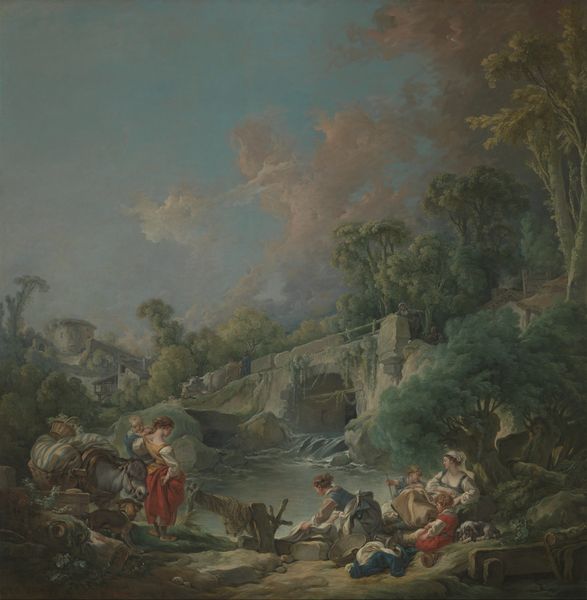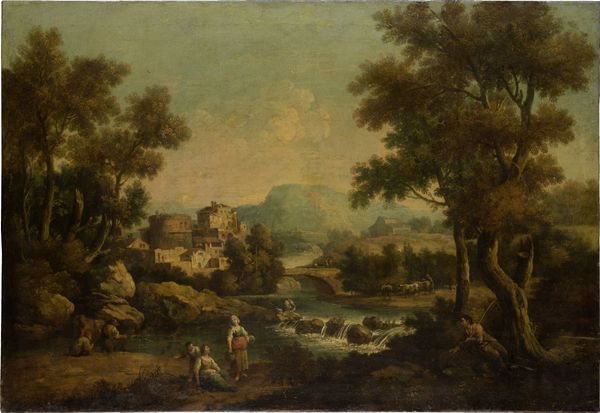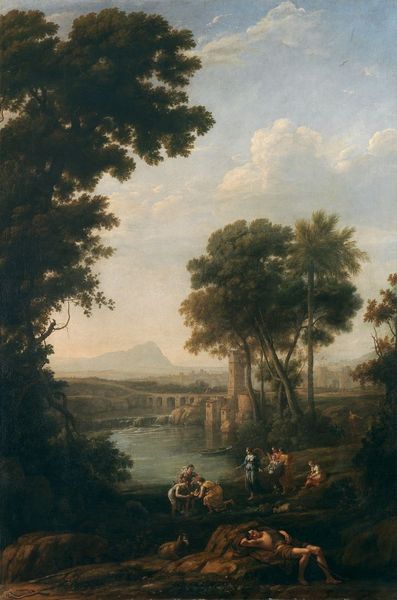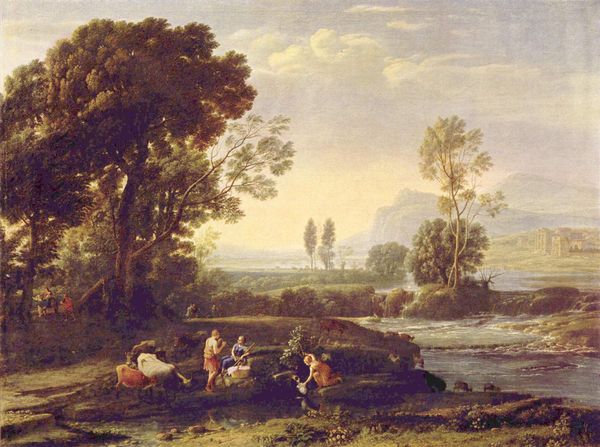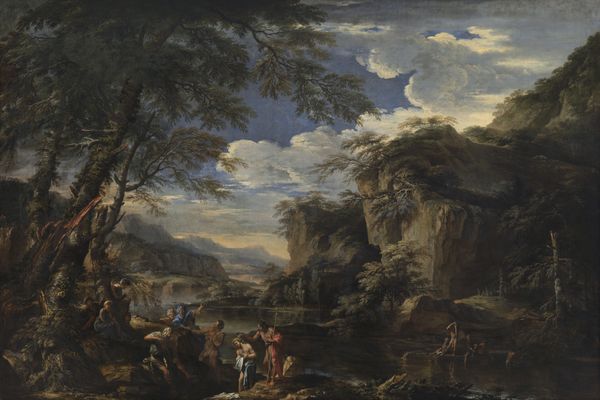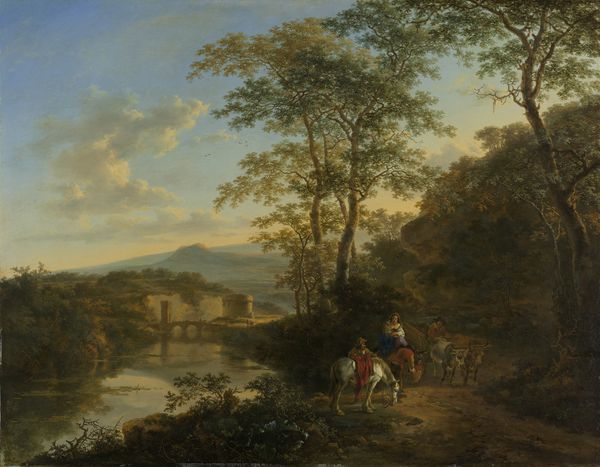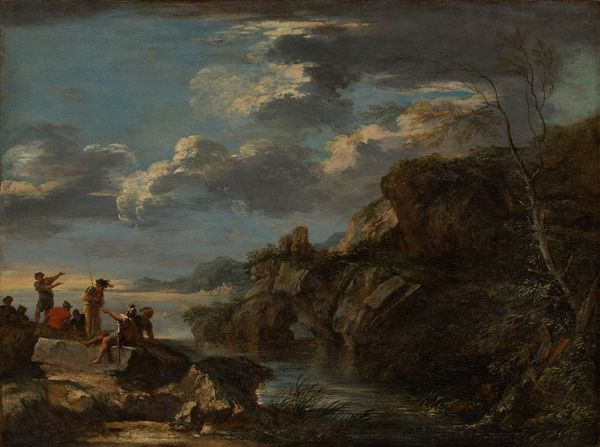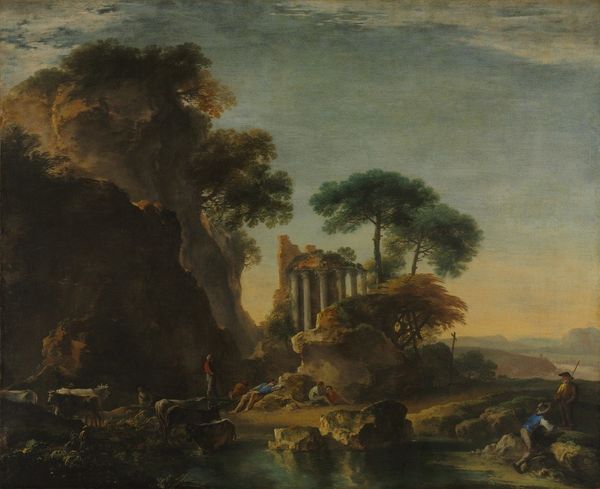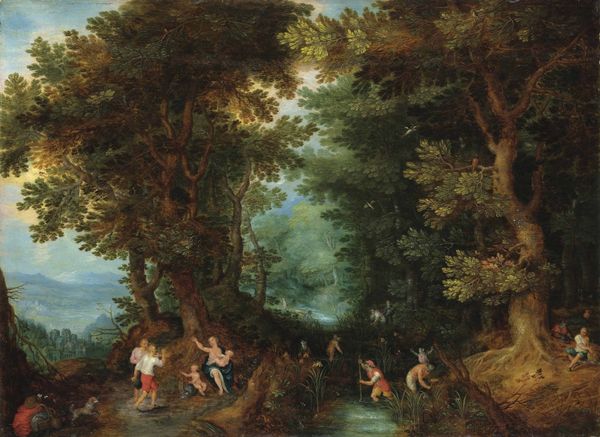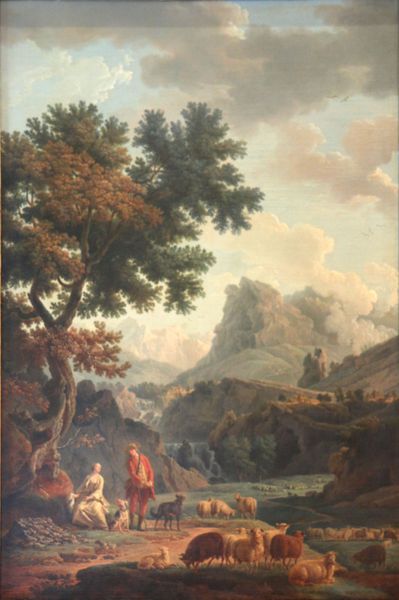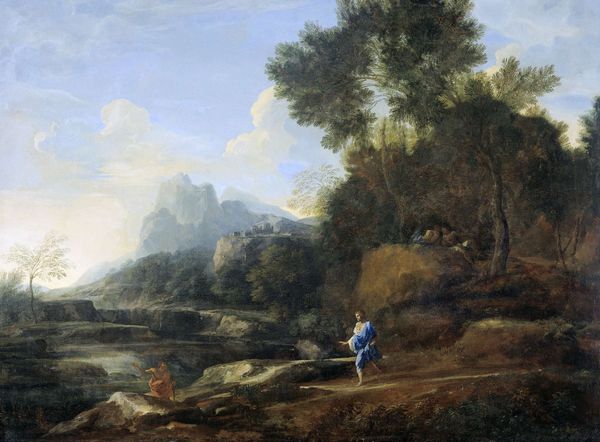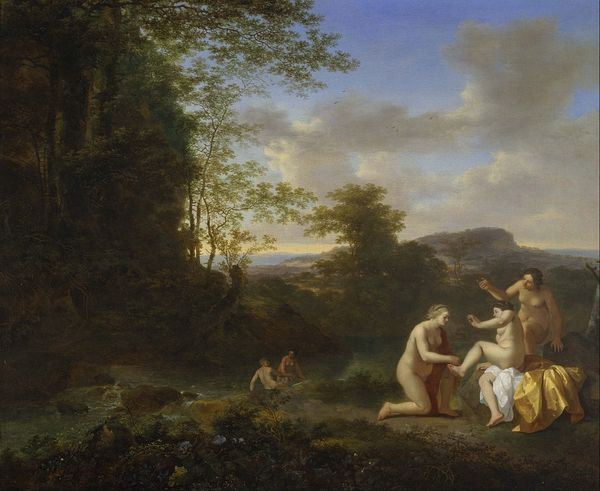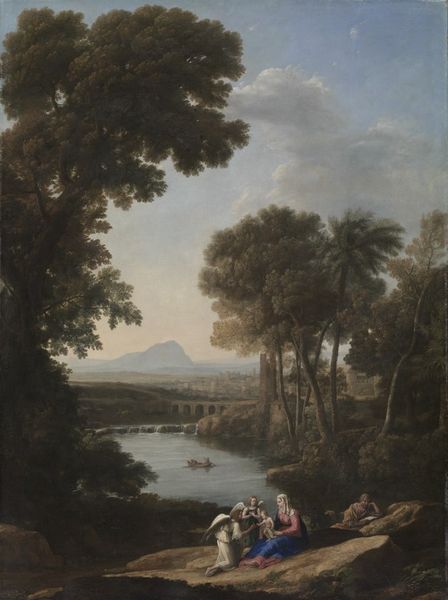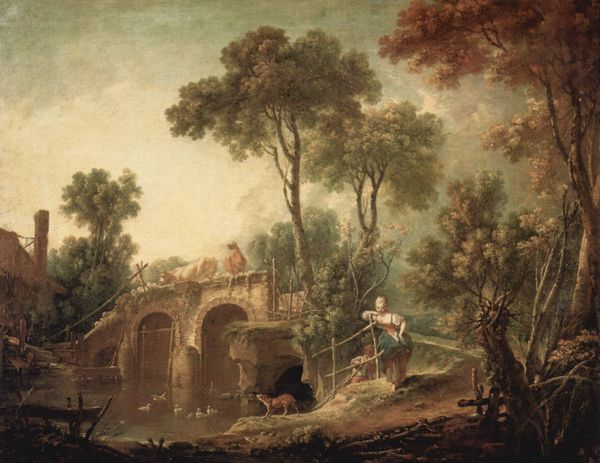
oil-paint
#
baroque
#
oil-paint
#
landscape
#
oil painting
#
genre-painting
Dimensions: height 59 cm, width 73 cm, depth 11 cm
Copyright: Rijks Museum: Open Domain
Curator: So, we have Giuseppe Zais' "Landscape with Figures," an oil painting likely created between 1730 and 1770. Editor: It's interesting how this seemingly idyllic landscape contains all these little scenes of labor. People fishing, relaxing, all within the same frame. What do you see in this piece, from your perspective? Curator: Well, I see a conscious construction, not just of the scene depicted, but of value itself. Look at how the figures are placed within the landscape; their activities, like fishing, are not romanticized, but presented as part of the broader cycle of production and consumption. Consider the materials, too - oil paint itself was becoming more readily available, aiding in the mass production of such genre scenes. What might this accessibility imply? Editor: Hmm, democratisation maybe? Making art for the masses, capturing the everyday experiences? Curator: Precisely. Zais isn't just painting a pretty picture; he's documenting the way people are working the land. Notice the detail on the clothing and tools. It speaks volumes about the skill, the labour invested in creating them. What do you think that says about the audience he might have been targeting? Editor: Perhaps a rising middle class, eager to consume images reflecting their own aspirations and understanding of labour? I hadn’t considered that the figures within a landscape could also be read as an insight into manufacturing in 18th-century Italy. Curator: Exactly! So, what's your takeaway about looking at art through the lens of materials and labor? Editor: It pushes me to think beyond aesthetics, to consider the socioeconomic forces that shaped both the artwork and its reception. It seems more complex than just a nice view of a pretty landscape. Curator: I agree completely. We are left recognizing the painting not as an aesthetic object alone, but as an artifact embedded within a system of production, consumption, and even class aspiration.
Comments
No comments
Be the first to comment and join the conversation on the ultimate creative platform.
